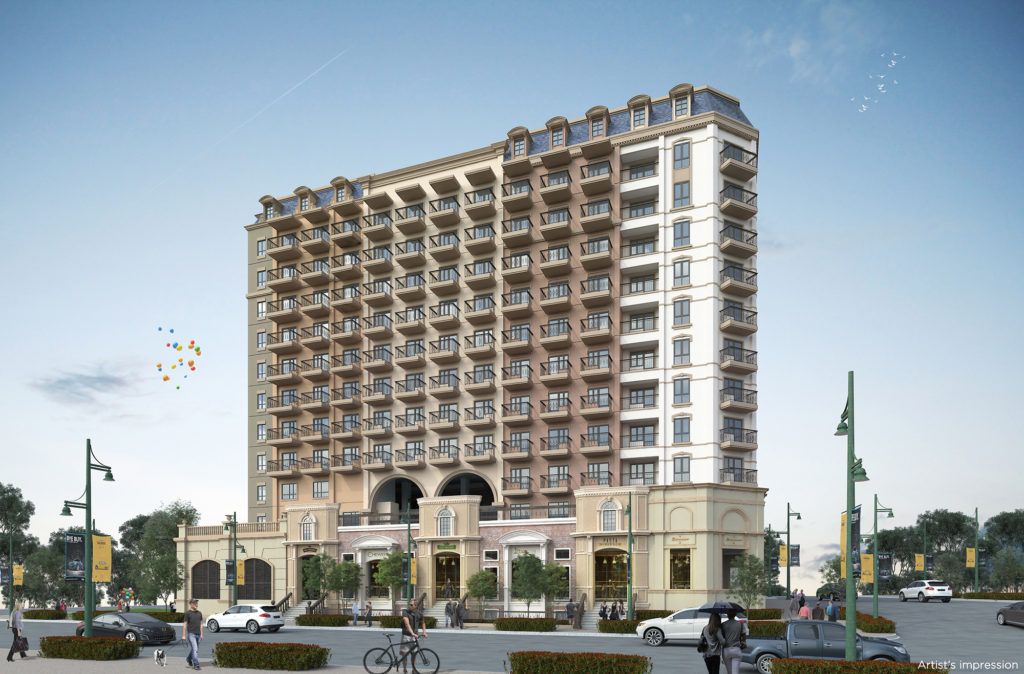Real estate developers' upbeat shift to suburbia
More and more developers are locating townships and leisure-oriented condotels outside of Metro Manila
According to the Colliers Philippines, Metro Manila experienced a slowdown in residential pre-selling take-up of 61 percent and project launches of 59 percent, especially for condominiums. The most affected segment covers the affordable and lower mid-income segments with nearly 60 percent of the remaining ready-for-occupancy (RFO) units as of 2024.

In contrast, the upscale, the more expensive price segments are still doing very well, accounting for only 5 percent of total unsold inventories.
From the data presented in the “Shift to Suburbia: Property Market Updates Within and Outside Metro Manila” report, Senior Researcher Joey Bondoc revealed that Makati CBD, Ortigas Center, and Fort Bonifacio are listing good take-up transactions. as reflected in the office sector.
Bondoc pointed out that the exit of the POGOs dampened the demand for occupancy and the elevated mortgage rates affected the mid-income segment.
With the improvement of the local economy based on the 5.6 percent GDP growth in 2024, Bondoc remains optimistic about the real estate sector. He also cited last year’s record high OFW remittances of $38.3 billion, 5.75 percent policy rate as of December 2024 interest, 5 to 6 percent infrastructure spending interest of GDP, and the 3.2 percent average inflation in 2024 from 6 percent in 2023.
“The Philippines economy is expanding. We have BPOs in the residential sector. There are very attractive leisure-specific projects being launched and then remittances from Filipinos working abroad continue to flow into the country. That's why developers are offering attractive payment terms,” Bondoc added.
He reported that developers are offering as much as a 30 percent discount for spot cash payments. For RFOs, buyers can move in with only 5 percent or no downpayment at all. Downpayment terms have been extended from 18 to 48 months.
Bondoc also observed that while some projects in Metro Manila are experiencing slower take-ups, leisure-centric condotels that were launched and marketed in key tourist destinations perform very well. Examples are Hotel 101 – Cebu by DoubleDragon Properties in Cebu is 100 percent sold, Aeon Bleu by FTC Group in Davao at 93 percent, and Moncello Crest by DMCI in Benguet at 56 percent.
“This only emphasizes the fact that geographic diversification is crucial for developers in tapping the demands outside of Metro Manila and cashing in on these driving opportunities for resort leisure developments,” commented Bondoc.
He also saw the market shift from vertical to horizontal as more pronounced last year with the continued increase of selling prices of horizontal projects.
In Luzon, condominium developments are recording very good take-up rates as well as price acceleration such as in the case of Chelsea Parkplace by Megaworld with an 89 percent price increase, Bryant Parklane North West by Megaworld with a 66 percent, and Azure North Monaco Tower by Century Properties with 63 percent.
In Visayas and Mindanao, the price acceleration of Camella Condo Homes The Frontera – Zinnia Prince By Vista Land went up by 273 percent, followed by Nara Residences Building B by Rockwell Land by 57 percent, and Aeon Bleu Tower 2 by Aeon Luxe Properties by 46 percent.
Some of the expensive condominiums in the provinces include Aruga in Cebu at P319,000 per sqm, Saint Marcel Residences in Pampanga at P277,000 sqm, and 9 Central Park at 265K in Bulacan.
The housing and lots, and lot-only units recorded a faster price acceleration. From 2016 to 2024, housing and lot units gained an average price increase of 3 to 12 percent. Davao’s price appreciation is the highest at a 12.3 percent compound annual growth rate. The average price appreciation of lot-only units was recorded at 8 to 18 percent from the same period.
“This only means that these house and lot projects and lot-only developments continue to be very attractive and are driving demand. It only proves that the residential sector remains a very good hedge against inflation,” explained Bondoc. “After the height of the pandemic, investors have been acquiring all these lot-only developments. With more open spaces and green features, sustainability is definitely a norm right now. A lot of Filipino investors and end-users are embracing this push for more sustainable living,” Bondoc added.